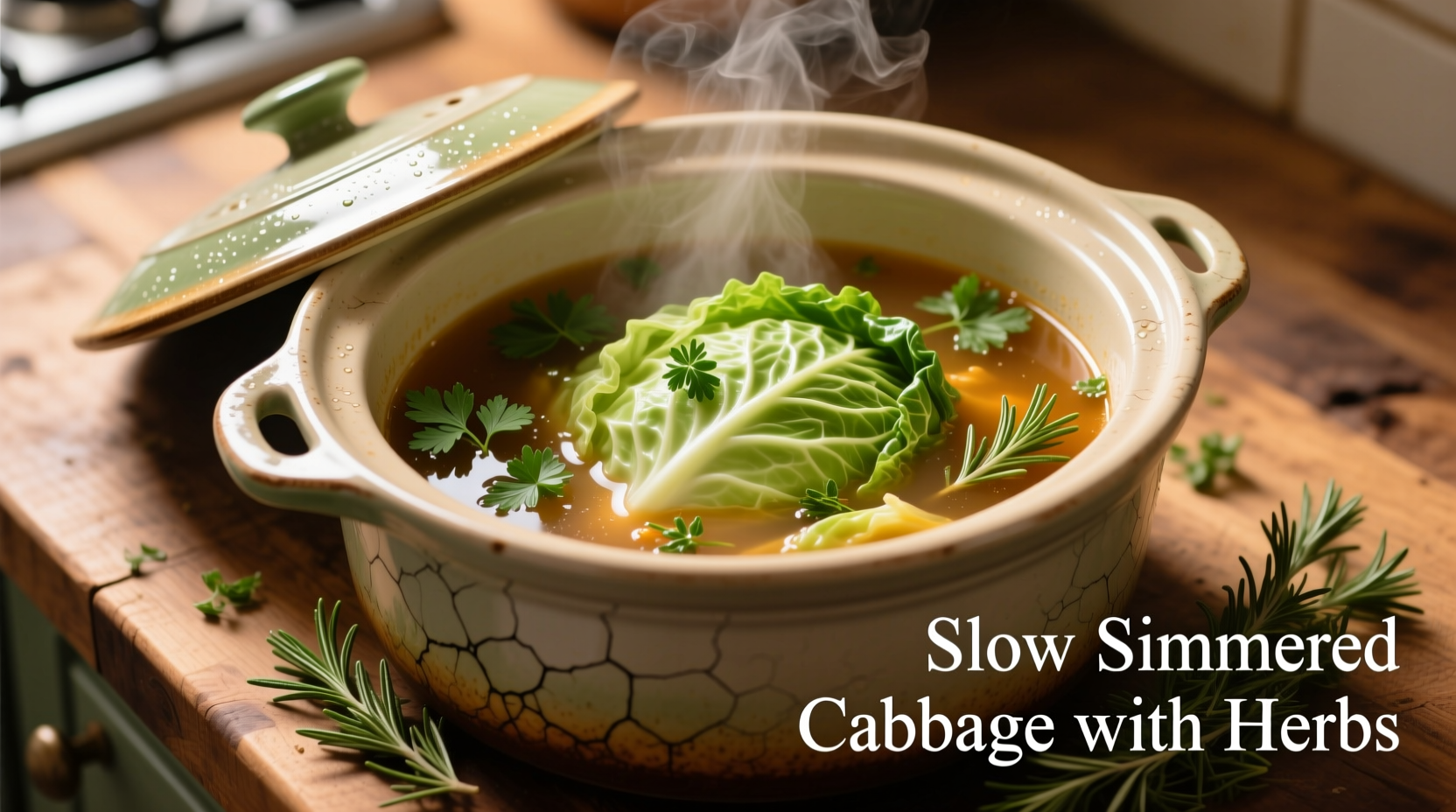Place chopped cabbage, broth, onions, and seasonings in your crock pot. Cook on low for 4-6 hours or high for 2-3 hours until tender. Stir occasionally and season to taste before serving. This hands-off method yields perfectly tender cabbage with deep, complex flavors.
Discover the ultimate method for transforming humble cabbage into a melt-in-your-mouth side dish that complements any meal. Crock pot cabbage cooking delivers consistent results with minimal effort—no more overcooked or undercooked cabbage. Whether you're preparing a weeknight dinner or planning a holiday feast, this slow-cooked approach maximizes flavor while freeing up your stovetop for other dishes.
Why Your Cabbage Deserves the Crock Pot Treatment
Traditional stovetop cabbage cooking often leads to inconsistent results—crisp edges with mushy centers, or uneven seasoning distribution. The crock pot's gentle, even heat transforms cabbage's naturally fibrous structure into tender perfection while allowing flavors to meld beautifully. According to USDA Food Safety and Inspection Service guidelines, slow cooking at temperatures above 140°F (60°C) safely breaks down tough vegetable fibers while preserving nutrients that might be lost in rapid boiling.
| Cooking Method | Texture Result | Flavor Development | Hands-On Time |
|---|---|---|---|
| Boiling | Often uneven | Minimal flavor absorption | Moderate monitoring |
| Sautéing | Crisp exterior | Good surface browning | High attention required |
| Crock Pot | Uniformly tender | Deep flavor infusion | Nearly hands-off |
Your Step-by-Step Crock Pot Cabbage Journey
Preparation Phase: Setting Up for Success
Begin with a fresh, firm cabbage head—approximately 2-3 pounds yields 6 generous servings. Remove any damaged outer leaves, then quarter the cabbage and remove the tough core. Thinly slice into 1-inch strips for even cooking. Proper slicing technique matters: according to research from the University of Illinois Extension, thinner cuts expose more surface area to the cooking liquid, accelerating flavor absorption while maintaining structural integrity during slow cooking.
Place the sliced cabbage in your crock pot, then add:
- 1 cup low-sodium vegetable or chicken broth (essential for moisture control)
- 1 large onion, thinly sliced
- 2 cloves garlic, minced
- 2 tablespoons apple cider vinegar (balances sweetness)
- 1 teaspoon caraway seeds (traditional pairing)
- Salt and freshly ground black pepper to taste

Cooking Phase: The Magic Happens
Cover and cook on LOW for 4-6 hours or HIGH for 2-3 hours. The ideal internal temperature for perfectly tender cabbage is between 185-195°F (85-90°C), as documented by the National Center for Home Food Preservation. Avoid lifting the lid frequently—each peek releases heat and extends cooking time by 15-20 minutes.
After 3 hours on LOW (or 1.5 hours on HIGH), carefully stir the cabbage. This redistributes the cooking liquid and ensures even tenderness. If you prefer a more caramelized flavor, add 4-6 slices of cooked bacon or 1 tablespoon smoked paprika at this stage.
Finishing Touches: Elevating Your Dish
During the final 30 minutes of cooking, assess texture and seasoning. Cabbage should be tender but still hold its shape—not mushy. If excess liquid remains, remove the lid for the last portion of cooking to allow evaporation. Stir in 1 tablespoon butter or olive oil for enhanced mouthfeel, and adjust seasoning with additional salt, pepper, or a splash of vinegar to brighten flavors.
Variations for Every Palate
Classic Eastern European Style: Add 1 diced apple and 1 teaspoon juniper berries with the initial ingredients for authentic flavor.
Vegan Comfort Version: Substitute broth for water and add 1 tablespoon nutritional yeast for umami depth.
Spicy Southwest Twist: Include 1 diced poblano pepper and 1 teaspoon cumin with your aromatics.
Troubleshooting Common Cabbage Challenges
Problem: Cabbage remains too firm after recommended cooking time
Solution: Smaller cabbage varieties like Napa require less time—reduce by 30-60 minutes. For dense green cabbage, extend cooking by 30-60 minutes and ensure liquid hasn't evaporated completely.
Problem: Dish tastes too acidic
Solution: Balance with 1 teaspoon honey or maple syrup during the final 30 minutes of cooking. The natural sugars in cabbage caramelize during slow cooking, so acidic elements should be introduced gradually.
Storage and Reheating Wisdom
Crock pot cabbage maintains quality for 4-5 days when stored in an airtight container in the refrigerator, according to FDA food storage guidelines. Reheat gently on the stovetop with a splash of broth to restore moisture—microwaving can make cabbage rubbery. For best results, consume within 3 days as cabbage continues to soften during storage.
Frequently Asked Questions
Can I cook frozen cabbage in a crock pot?
Yes, but thaw first for best results. Frozen cabbage releases excess water that can dilute flavors. Thaw overnight in the refrigerator, then squeeze out excess moisture before adding to your crock pot. Cooking time remains the same as fresh cabbage.
How do I prevent cabbage from becoming too watery?
Use the right cabbage-to-liquid ratio—1 part liquid to 4 parts cabbage by volume. Avoid adding extra water beyond what's specified in recipes. For particularly watery cabbage varieties, sprinkle slices with salt and let sit for 20 minutes before cooking to draw out excess moisture.
What's the ideal crock pot size for cooking cabbage?
A 4-6 quart crock pot works best for standard cabbage recipes. Fill no more than two-thirds full to allow proper heat circulation. Smaller pots (2-3 quart) work for single servings but require careful monitoring to prevent overcooking.
Can I add other vegetables to my crock pot cabbage?
Absolutely. Root vegetables like carrots and potatoes should be added at the beginning. More delicate vegetables like bell peppers or zucchini should be added during the last 1-2 hours of cooking to maintain their texture and color.











 浙公网安备
33010002000092号
浙公网安备
33010002000092号 浙B2-20120091-4
浙B2-20120091-4